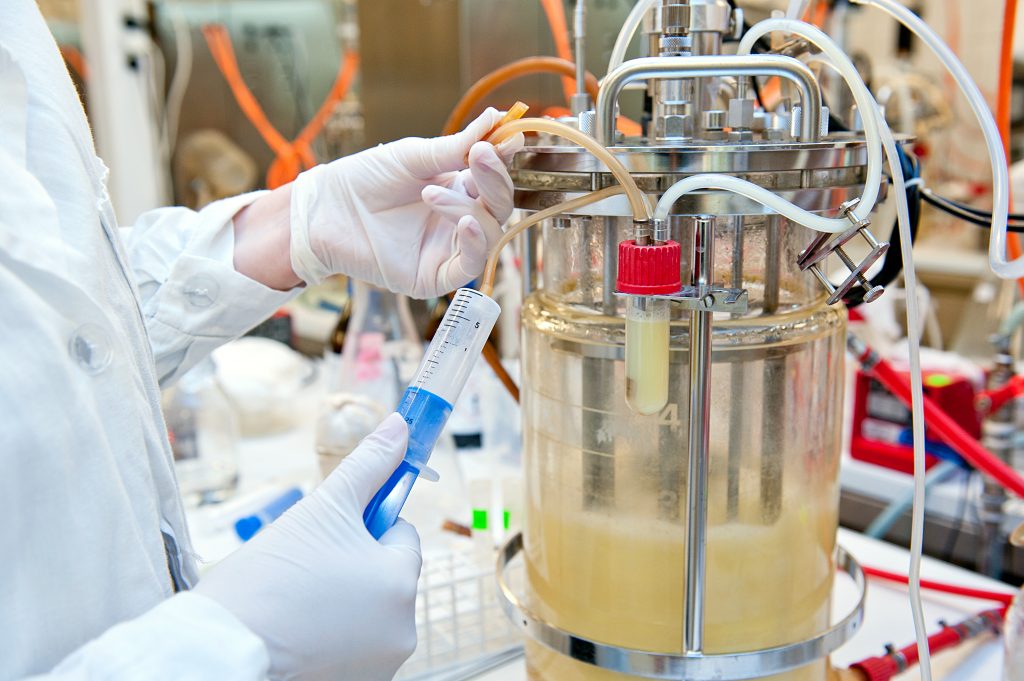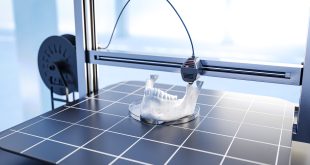By Ed Sullivan
Over the past 30 years or so, bioprocessing in Canada has grown at exponential rates from the early days of research-based companies springing from life sciences educational establishments to global organizations that rival traditional fine chemical pharmaceutical producers. Indeed, many global players in the drug manufacturing industry practice both fine chemical and bio processing. Bioprocessing activities cover a growing range of market sectors ranging from cell and tissue engineering, vaccine development, agricultural seed and plant treatments, nutraceuticals, and biochemical engineering, both at a research and manufacturing level.
At the heart of bioprocessing, whether research, development or production, processes are supported in bioreactors, which are the vessels in which controlled cell growth occurs, finished product is stored, and from which ingredients such as pure water are delivered. Bioreactors provide a sterile environment in which controlled processes to produce high purity, often injectable, products occur. Whether the process itself requires pressure or heat, or both pressure and heat, that sealed bioreactor will require periodic sterilization to maintain purity. When sealed, the bioreactor is a pressure vessel under ASME Boiler & Pressure Vessel Code rules and shall be fitted with an ASME certified pressure relief device when its design pressure exceeds 15 psig.
The primary means of application for rupture disk pressure relief devices to bioreactors is within so called tri-clamp fittings that are the connection of choice for bioreactors due to their sterility and quick connect / quick disconnect capability. This quick-release, sanitary style of fitting has been popular in bioprocessing since the industry’s inception. Developing rupture disk technology that can be installed on tri-clamp fittings that are conveniently mounted and dismounted for cleaning and inspection purposes was a key design challenge tackled in the late 1980s when bioprocessing was gaining respect at a research level.
Bioreactors are pressure vessels used for sterile processing and storage that comply with ASME (American Society of Mechanical Engineers) Pressure Vessel Code requirements, which define an absolute requirement for pressure relief. To meet that requirement, users have the choice between rupture disks and pressure relief valves. Rupture disks feature a much cleaner construction than relief valves and occupy minimal installation space – limited real estate for instrumentation and safety device connection is a challenge on commonly used small volume bioreactors. The superior cleanliness of rupture disks means that this is the technology of choice where sterility is concerned. The ASME Code permits pressure relief valves to be used in combination with rupture disk devices, typically downstream of the rupture disk device so that the valve does not come into direct contact with the process.
Choosing the right rupture disk
Rupture disks are non-reclosing pressure relief devices that protect vessels, such as bioreactors, from damaging over-pressurization (or vacuum) conditions. Rupture disks are available in various designs, sizes, shapes and set pressures.
While rupture disk sizes and pressure settings vary according to the needs of different industries, most bioprocessing applications require rupture disks that are one inch to four inches in nominal size, and provide pressure relief in the 30- to 60-psig range. The dimensions of tri-clamp fitting compatible rupture disks are unique compared to those applied to traditional pipe flange arrangements.
Experts advise that processors consider rupture disks of the “reverse buckling” design. Unlike traditional forward-acting disks, where the load is applied to the concave side of a dome, in a reverse buckling design, the dome is inverted toward the source of the load. Reverse buckling disks are typically sturdier than forward-acting disks, which can be thin and difficult to handle, and as a result have greater longevity, accuracy and reliability over time.
Reverse buckling rupture disks are designed for non-fragmentation upon activation, and are recommended for use with downstream pressure relief valves in order to isolate them from processes, ensuring leak tightness, reduced valve maintenance expenses and often allowing the use of lower-cost valve trim.
Important design features
Other rupture disk design features may be important to various users in industries where bioprocessing is accelerating. For example, disks should provide a fail-safe response to an overpressure condition for both gas and liquid media. In the field of bioprocessing, rupture disks designed for CIP/SIP (clean/steam in place) service – that provide for minimum “dead space” between process fluid and the disk, and offer a sanitary alert sensor option to announce rupture disk activation – are important to the process designer.
The recommended material for most rupture disks used in bioprocessing applications is stainless steel, although the option of Hastelloy and even Tantalum can be of value for extremely corrosive environments.
In addition to employing the appropriate rupture disk, many users prefer to use an outlet fitting with industry standard tri-clamp connections that is keyed to the proprietary rupture disk gasket and ensures installation of the reverse buckling disk onto the bioreactor sanitary inlet ferrule in the right direction. This type of connection and gasket arrangement serves to mistake-proof the direction of the rupture disk installation.
Meeting miniaturization challenges
In some instances, bioreactors and related storage vessels are becoming more miniaturized. To accommodate such cases, some manufacturers now offer a unique, welded ¾-inch rupture disk assembly with one-inch tri-clamp connection compatibility.
Miniaturization of rupture disks presents unique challenges that are best met by utilizing reverse buckling technology, according to Geof Brazier, BS&B Safety Systems, an expert in rupture disk devices.
As burst diameters decrease, it becomes challenging to design a reverse buckling disk. To resolve this issue, novel structures have been created that control the reversal of the rupture disk to always activate in a predictable manner.
This includes, for example, a hybrid shape that combines reverse buckling and forward bulging characteristics that are pre-collapsed. In this type of design, a line of weakness is typically placed into the rupture disk structure to define a specific opening flow area when the reverse type disk activates.
 BioLab Business Magazine Together, we reach farther into the Canadian Science community
BioLab Business Magazine Together, we reach farther into the Canadian Science community






